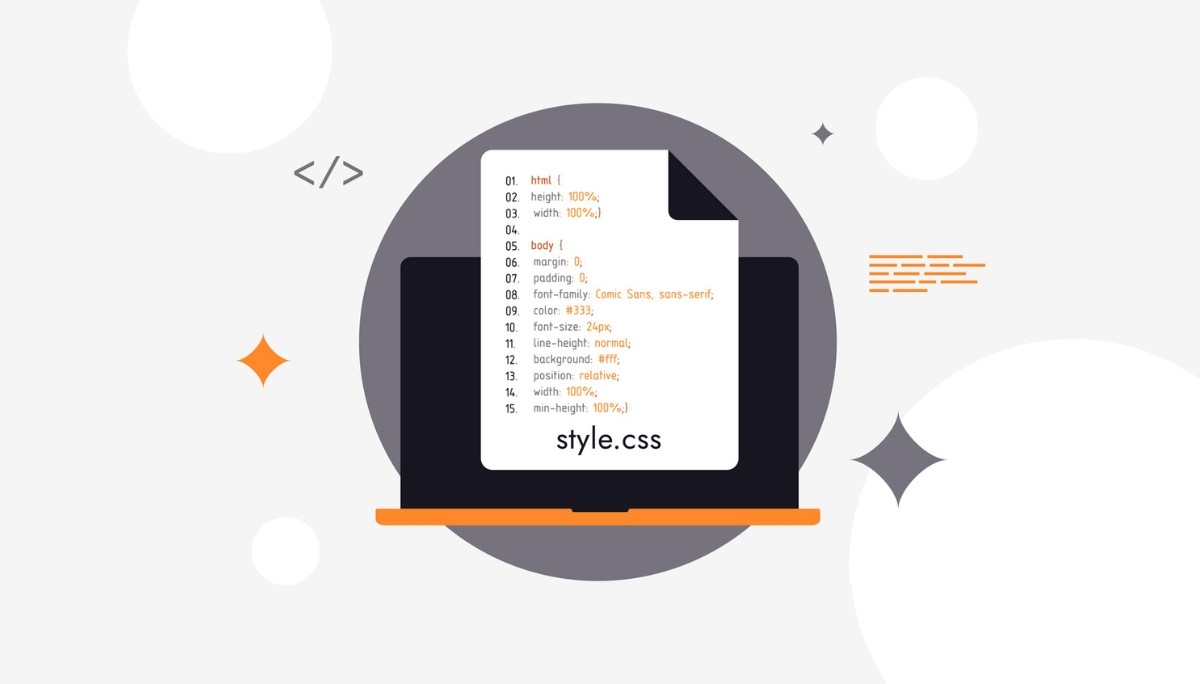Frontend vs. Backend: What’s the Real Difference?
By
Samantha Cox
•
Jun 20, 2025
Backend frameworks help developers build server-side applications efficiently. They make it easier to manage databases, handle server logic, and connect with APIs. They do the heavy lifting so developers can work faster and more efficiently. In this guide, we’ll break down what backend frameworks are, why they’re important, and take a closer look at some of the most popular ones like Django, Ruby on Rails, and Express.js. If you’re a recruiter looking for engineers skilled in these technologies, Fonzi AI can help you pinpoint top backend talent quickly, so your team doesn’t just build, but builds smarter.
Key Takeaways
Backend frameworks are essential for managing server-side operations, data processing, and ensuring proper functionality to support frontend development.
Popular backend frameworks such as Django, Ruby on Rails, and Express.js offer unique features that cater to diverse web application needs and emphasize rapid development and scalability.
Selecting the right backend framework is critical and should consider factors like community support, scalability, and ease of use to optimize web application performance.
What are Backend Frameworks?

Back-end frameworks are the backbone of robust and scalable web applications. They manage server-side operations, ensuring data is processed, stored, and retrieved efficiently, thus supporting the functionality of the frontend. While frontend development focuses on the visual aspects and user interactions of a web application, backend development deals with the underlying logic, data management, and server-side operations that power these experiences. This division of labor allows full-stack developers and back-end developers to create seamless, responsive, and dynamic web applications that function properly across different devices and platforms. Understanding how the backend works is essential for optimizing these processes.
In essence, backend frameworks are essential tools for backend developers, enabling them to build the structural foundation of web applications. These frameworks handle everything from database interactions to server-side logic, ensuring that the data and functionality required by the frontend are readily available.
This synergy between frontend and backend development is crucial for delivering a cohesive user experience and maintaining the integrity of web applications, particularly in the front end, with the inclusion of interactive elements and a graphical user interface where users interact with the user-facing side of web design. Frontend refers to the part of web development that users directly engage with as a front-end developer, enhanced by interactive features. Front-end developers play a vital role in this process, especially in front-end development.
Popular Backend Frameworks

The world of backend frameworks is rich and varied, with several popular choices that cater to different needs and preferences in web development. Among the most widely used are server-side programming languages like Django, Ruby on Rails, and Express.js. Each of these frameworks offers unique features and benefits, making them suitable for various types of web applications.
Understanding these frameworks can significantly enhance the capabilities of full-stack developers, allowing them to see the big picture and choose the best tools for their projects. Full-stack development refers to a comprehensive approach that encompasses both front-end and back-end development.
Django
Django stands out with its ‘batteries-included’ philosophy, offering a comprehensive set of features right out of the box. This makes it particularly suitable for large-scale applications that demand robust functionality and scalability. Django’s architecture supports high-traffic and complex data structures, ensuring that applications can handle significant loads without compromising performance. This capability is why major platforms like Instagram rely on Django to manage their backend operations effectively.
Moreover, Django’s emphasis on security, rapid development, and maintainable code makes it a favorite among backend developers. Its built-in features cover everything from user authentication to data validation, reducing the need for extensive third-party integrations and allowing developers to focus on building the core functionality of their applications.
Ruby on Rails
Ruby on Rails, often simply referred to as Rails, is renowned for its philosophy of convention over configuration. This approach significantly reduces the number of decisions developers need to make, allowing them to build applications more quickly and efficiently. Rails’ Model-View-Controller (MVC) architecture separates application logic from the user interface, promoting organized and maintainable code. This structure is particularly beneficial for complex web applications where maintaining clarity and organization is crucial, especially when using object relational mapping.
Rails powers some of the most well-known platforms in the world, including GitHub and Shopify. These platforms leverage Rails’ rapid development capabilities and clean architecture to handle large-scale operations and high user traffic effectively. This makes Rails an excellent choice for backend developers looking to build robust and scalable applications.
Express.js
Express.js is celebrated for its lightweight and minimalist design, making it a flexible choice for developers looking to build fast and scalable applications. Its simplicity does not come at the cost of functionality; Express.js allows developers to create robust APIs with minimal overhead, streamlining the development process. This framework’s seamless integration with Node.js further enhances its capabilities, enabling the development of powerful applications through asynchronous programming.
Popular applications like Trello utilize Express.js to manage their backend operations, showcasing its strength in building APIs and real-time applications. For backend developers seeking a framework that offers both flexibility and performance, Express.js is a compelling choice.
Choosing the Right Backend Framework

Selecting the appropriate backend framework is a critical decision that can significantly impact the efficiency and performance of web applications. Important factors to consider include:
Community support: Frameworks with large, active communities provide valuable resources, tutorials, and troubleshooting assistance.
Scalability: Essential for managing increased user traffic and data loads, ensuring applications can grow without major overhauls.
Ease of use: Influences developer productivity and the speed of development.
Practical assessments, such as building proof of concepts, can help other developers evaluate the capabilities of different frameworks and determine their suitability for specific projects. By testing frameworks in real-world scenarios, developers can make informed decisions that align with their project’s requirements and goals.
Key Features of Effective Backend Frameworks
Effective backend frameworks possess several key features that enhance their functionality and usability. Data security is paramount, with integrated measures to protect against common vulnerabilities and ensure safe user interactions. Performance optimization techniques, such as caching and database query enhancements, are also crucial, enabling frameworks to handle high traffic and large data volumes efficiently.
Another vital feature is scalability, which allows applications to grow and adapt to increased user demands without significant redesign. Modern backend frameworks often support development practices like microservices and dynamic content, which improve the flexibility and maintainability of applications, including effective database management.
Additionally, ease of use and seamless integration with other tools and technologies can significantly impact development speed and efficiency, especially for teams with varying levels of experience. Frameworks like Django, known for their comprehensive built-in features, enable rapid development without needing extensive third-party integrations. This allows developers to focus on core functionalities and business logic, accelerating the development process while maintaining high standards of security and performance.
How Backend Frameworks Enhance Web Development

Backend frameworks significantly enhance the efficiency of web development by providing essential tools and libraries that simplify the coding process. These frameworks support rapid development cycles, enabling developers to iterate quickly and launch applications faster. Backend frameworks manage repetitive tasks and offer pre-built components, enabling developers to concentrate on business logic and essential features. This reduces development time and resource usage.
Additionally, backend frameworks promote teamwork by offering a structured and standardized environment for application development and software engineering. Such a structured approach ensures consistent application quality and adherence to best practices, guaranteeing a high-performing and reliable final product.
Support for asynchronous processing boosts performance by enabling simultaneous task execution, thus enhancing the overall efficiency of web applications through event-driven programming.
Integrating Backend Frameworks with Frontend Technologies
Effective functioning in a full-stack development environment requires:
Seamless integration with frontend technologies for backend frameworks.
Compatibility with existing technologies and services, influencing the integration and development workflow.
Efficient APIs that enable smooth communication between the frontend and backend, creating a cohesive user experience.
Frontend frameworks such as React and Angular use component-based architecture to enhance reusability and maintainability, while state management tools like Redux and Vuex manage data flow in complex applications. Combined with backend frameworks, these tools empower full-stack developers to create robust and scalable web applications that deliver seamless user experiences across various devices and platforms, including UI components.
Case Studies: Successful Implementations of Backend Frameworks
Successful real-world implementations of backend frameworks showcase their effectiveness in managing high-traffic and complex applications. For example, Django has been used effectively in web applications like Instagram, which needed a robust framework to handle significant user loads and complex data structures. Similarly, Ruby on Rails powers platforms like GitHub and Shopify, highlighting its rapid development capabilities and its capacity to manage large-scale operations.
Express.js powers high-performance applications like MySpace and Trello, benefiting from its lightweight design and flexibility, which enable fast response times and seamless scalability.
These case studies illustrate the practical benefits of these frameworks and their capability to meet the diverse needs of modern web applications.
Future Trends in Backend Frameworks

The future of backend frameworks is poised to be shaped by several emerging trends. AI-driven features, such as predictive analytics and automated debugging, are expected to become integral components, enhancing the capabilities of backend frameworks. Real-time data processing will also be a priority, with frameworks focusing on low-latency communication for applications like chat and IoT.
The shift towards microservices and serverless architectures will further enhance backend development, improving support for these modern structures and enabling more flexible and maintainable applications.
Cloud-native development will drive frameworks to provide better support for multi-cloud environments and efficient management of distributed systems, while emerging frameworks will likely support new programming languages and programming languages like Rust and Go, reflecting the growing demand for performance and efficiency in cloud computing.
Summary
Understanding the distinctions between frontend and backend development is essential for creating robust and scalable web applications. Backend frameworks like Django, Ruby on Rails, and Express.js each offer unique features and benefits, making them suitable for various types of projects. Choosing the right framework involves considering factors such as community support, scalability, and practical assessments to ensure it meets the project’s requirements.
Looking ahead, backend frameworks are evolving fast—especially with trends like AI-driven features, real-time data processing, and cloud-native development taking center stage. Staying on top of these shifts helps developers build smarter, more efficient web apps that are ready for what’s next. This guide gives you the foundation to do just that, so you can future-proof your development approach and keep delivering innovative solutions. And if you’re a recruiter searching for engineers who are already ahead of the curve, Fonzi AI makes it easy to connect with top backend talent skilled in the latest tools and trends.




